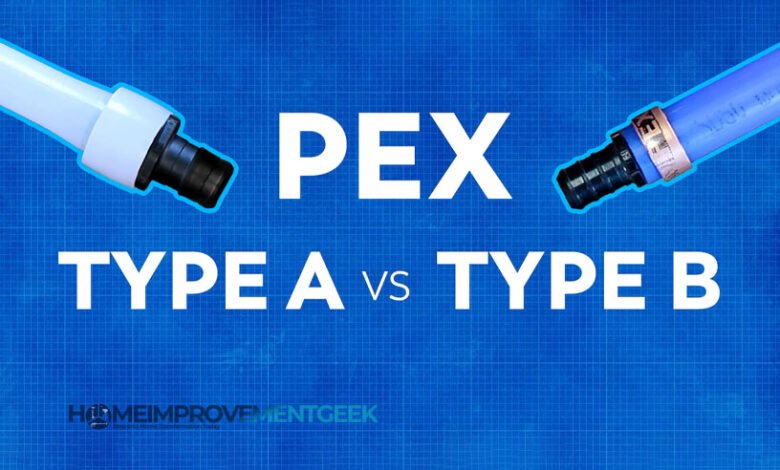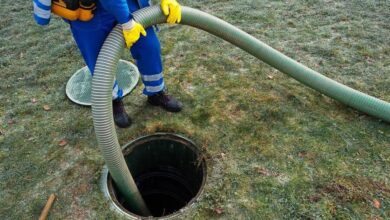The Ultimate Guide to Choosing Between Pex A vs Pex B

Choosing the right pex for your needs is crucial to ensure optimal performance and avoid headaches down the road. But with so many options on the market, determining whether Pex A or Pex B is better for your specific use case can be challenging. This comprehensive guide examines the key features, benefits, use cases and differences between Pex A and Pex B to help you decide which option makes the most sense for you.
Why Understanding the Difference Between Pex A vs Pex B Matters
When it comes to pex systems, few debates spark more passionate discussions than Pex A versus Pex B. Both offer unique capabilities that make them suitable for certain applications. By learning what sets each apart, you can determine the best fit for your needs and avoid costly mistakes from using the wrong pex.
Whether you’re constructing a new building, renovating an existing structure or executing specialized industrial applications, choosing between Pex A and Pex B has critical long-term implications. Getting this decision right from the start prevents unnecessary repairs, replacements and compatibility issues. It also ensures your pex system performs as expected for years to come.
While at first glance Pex A and Pex B may seem interchangeable to amateur DIYers, experienced builders and engineers understand the intrinsic performance differences under the surface. We’ll examine what makes each pex unique so you can make an informed, confident decision for your upcoming project.
Pex A In-Depth Analysis: Features, Benefits and Use Cases
Pex A represents one of the most common and versatile pex options on the market today. With the right fittings and setup, Pex A provides reliable service for several residential and commercial applications.
Notable Features and Benefits of Pex A
- Flexible at low temperatures – Whereas some pex installations become brittle and crack in cold weather, Pex A remains flexible at temperatures as low as -18°F. This makes it suitable for outdoor runs and installations in unheated structures.
- Resists scale buildup – Pex A tubing limits mineral deposits and scale accumulation over time, extending service life and improving flow rate consistency compared to other pex materials.
- Handles pressure fluctuations – Pex A provides a smooth inner wall that enables excellent flow even under pressure and temperature fluctuations. This reduces flow loss compared to ribbed tubing.
- Fast, easy installation – With the proper crimping tools, Pex A allows quick, simple installation without requiring glue or solvents. The tubing offers flexibility to route through walls and ceilings with a minimum bend radius of 6 inches.
- Chemical and corrosion resistance – Pex A stands up well to chlorinated water systems, diluted acids and alcohol solutions with limited permeation.
Common Pex A Use Cases and Applications
Thanks to its balance of flexibility, durability and ease of installation, Pex A works well across numerous residential, commercial and specialized settings, including:
- Potable plumbing systems – For hot and cold potable water delivery, Pex A represents a go-to choice. Its ability to handle pressure fluctuations makes it well-suited for municipal water supply lines.
- In-floor radiant heating – Pex A allows hot water or glycol distribution for radiant floor heating installations with less permeation and more reliable flow than other pex materials.
- Drain/waste/vent lines – While not intended for pressurized sewer mains, Pex A handles residential greywater drainage applications effectively at reasonable cost.
- Turf irrigation systems – Flexible Pex A tubing allows simpler installation for underground lawn and turf irrigation with consistent water delivery.
- Radiator connections – Pex A allows flexible hose connections to steel baseboard radiators in hydronic heating systems, even in cold climates.
Overall, Pex A provides an affordable pex option for running water and other fluids across an extensive range of residential and commercial settings with its durability and easy installation.
How Pex A Compares to Similar Pex Products
Pex A differs from other common pex materials like Pex B and C in a few important ways:
- More flexible than Pex B – With its crosslinked polyethylene construction, Pex A better maintains flexibility in cold weather installations compared to Pex B.
- Faster installation than Pex C – No primer or glue is necessary to connect Pex A lines with proper brass crimp fittings. Factory printed measurement markings also save time.
- Superior pressure handling to PVC – Unlike rigid PVC piping, flexible Pex A tubing absorbs hydraulic shock under pressure fluctuations for smooth flow.
- Lower cost than stainless steel – In applications like commercial plumbing, Pex A provides corrosion resistance and decades of reliable service at far lower material cost than stainless piping.
Determining when to use alternative pex materials comes down to factoring in temperature extremes, pressure requirements, chemical compatibility needs and upfront budget for each individual application.
What Makes Pex B Unique: Key Characteristics, Benefits and Applications
While Pex A undoubtedly serves certain applications well, Pex B using random copolymerization offers its own distinct advantages. This alternative pex material contains superb impact strength and heat resistance compared to traditional Pex A.
Noteworthy Features and Capabilities of Pex B Tubing
- Impact strength – With outstanding break resistance and tensile strength, Pex B handles incidental impacts without cracking or leaking compared to rigid metal or thermoplastic piping.
- Heat tolerance – Pex B withstands exposure to high-temperature water up to 200°F, along with spikes up to 180°F for potable water systems. This exceeds Pex A’s maximum continuous rating.
- Superb chemical resistance – For aggressive chemicals far beyond drinking water, Pex B stands up to various acids, bases, alcohols, and inorganic solutions that compromise other plastics.
- Minimal thermal expansion – Even with temperature fluctuations, Pex B expands and contracts less than 1/10 the rate of rigid copper piping per degree Fahrenheit temperature change.
- Quick connecting capability – Using alternative cold expansion connection techniques, Pex B allows extremely rapid joining without hot fusion tools, crimp rings, or clamps.
Thanks to these capabilities, Pex B reliably serves hot water heating applications and aggressive chemical transport uses where other piping falls short.
Common Applications Where Pex B Excels
Specifiers should consider Pex B for:
- Recirculating hot water lines – For piping between a water heater to distant fixtures in large homes, Pex B handles prolonged exposure to hot water recirculating through the loop to avoid cooling.
- Pool and spa plumbing – With its chlorine tolerance and flexibility compared to rigid PVC pipe, Pex B serves inground pool equipment pad plumbing connections effectively.
- Hydronic radiant heating manifolds – High temperatures posed by closely spaced radiant heating zone manifold stations make Pex B useful for flexible connections.
- Industrial chemical transport – Strong acids, bases and alcohols require chemical resistance tubing; Pex B works where stainless steel becomes cost-prohibitive.
- Compressed air lines – At weights below 155 pounds per 100 feet, Pex B provides corrosion-resistant compressed air lines.
These applications highlight where Pex B makes the most sense over traditional Pex A piping. By factoring in temperature, pressure, expansion and chemical compatibility demands, one can easily justify specifying Pex B.
How Pex B Compares Against Other Pex Products
Unlike Pex A with its polyethylene only construction, Pex B utilizes random polypropylene copolymerization:
- Superior heat resistance to Pex A – With continuous 200°F hot water capability, Pex B accommodates recirculating loops and intermittent spikes above 180°F where Pex A becomes limited.
- Better chemical handling than Pex C – In addition to drinking water system chlorination, Pex B withstands various industrial acids, solvents and chemicals that compromise Pex C.
- Less permeation than Polybutylene – Past polybutylene piping garnered a bad reputation for oxygen permeation, calcium carbonate buildup and high failure rates; Pex B contains hydrophobic materials that solve this issue.
- Lower cost than PERT piping – At a lower material price point per foot, Pex B provides favorable cost savings over PERT while still offering flexibility for easier routing through structures.
There’s no denying Pex A works perfectly for conventional plumbing uses. But weighing temperature resistance, chemical tolerance and long-term failure rates makes Pex B ideal for challenging hot water and chemical transport applications.
Key Differences Between Pex A and Pex B At a Glance
Given the unique capabilities outlined so far, how exactly does Pex A compare against Pex B? While both provide crosslinked polyethylene construction, the materials and manufacturing processes create performance differences:
| Comparison Criteria | Pex A | Pex B |
|---|---|---|
| Base material composition | PE only | PP/PE copolymer |
| Maximum temperature rating | 180°F continuous 140°F intermittent | 200°F continuous 180°F intermittent |
| Chemical resistance | Chlorine, dilute acids/bases | Chlorine plus wider variety acids/bases |
| Thermal expansion | Higher expansion ratio | Lower expansion ratio |
| Impact strength | Moderate | Maximum |
| Permissible bending radius | 1/8” tubing: 6″ minimum | 1/8” tubing: 4″ minimum |
| Connection methodology | Crimp band, insert fittings | Crimp, cold expansion sockets |
Both Pex A and Pex B handle over a decade of service life by mitigating corrosion and mineral deposits that cripple metal piping over time. AndDIYers and professionals alike appreciate the flexibility both offer for installation compared to rigid pipe materials.
But depending on temperature, and chemical and structural demands, builders, engineers, and system designers may find themselves justifying Pex B material for its superb impact resistance, heat tolerance, and chemical handling capabilities. Conversely, basic potable plumbing and radiant heating applications lean toward more affordable Pex A.
Key Considerations When Choosing Between Pex A vs. Pex B
From comparing features and capabilities alone, distinguishing applications favoring Pex A versus Pex B becomes clear for unique situations:
Select Pex A When:
- Maintaining flexibility in cold temperature environments remains paramount
- Plumbing home potable water delivery systems
- Connecting radiators in hydronic heating systems
- Running PEX in outdoor settings
- Performing in-floor radiant heating manifolds and tubing
Choose Pex B For:
- High-temperature recirculating hot water line systems
- Pool, spa and hot tub-associated plumbing connections
- Industrial chemical transport lines and acid waste piping
- Compressed air lines in lieu of metallic pipe
- Conveying aggressive solvent solutions
Of course, hybrid systems utilizing both Pex A and Pex B for respective sections of a building work perfectly fine. This “best of both worlds” approach allows builders to maximize the strengths of each material.
Properly determining upfront which variety makes sense depends greatly on temperatures, pressure, chemical concentrations, and exposure duration for which the finished piping system must perform. Only by factoring in these considerations can one reliably narrow down to Pex A or Pex B for long-term functionality.
Recommendations for Making the Best Pex A vs Pex B Decision
After reviewing the pros, cons, use cases, and differences between Pex A and Pex B, hopefully, the choice becomes obvious for your upcoming residential renovation or commercial construction project. Just remember these key takeaways when deciding on direction:
- Get clear on temperature and pressure demands – If you’re dealing with a recirculating system greater than 180°F like a commercial hot water loop, immediately go with Pex B rather than hit Pex A limitations.
- Understand chemical compatibility requirements – Whether residential greywater, pool chemicals, or industrial transport of corrosive solutions, ensure you choose appropriate chemical-resistant pex.
- Consider hybrid Pex A/Pex B systems – Using Pex B solely for specialized sections like recirculation lines while sticking to Pex A for general potable water simplifies decisions.
- Factor in thermal expansion differences – With both experiencing some expansion and contraction, determining major directional changes and providing looped slack offsets tubing stress.
- Enable proper anchoring and supports – 接 Masonry anchors, brackets, or straps for larger diameter Pex limit strain on connections to equipment or changes in direction.
Choosing between Pex A and Pex B need not cause endless debate or decision paralysis. By realistically evaluating temperature, pressure, chemical, expansion, and movement considerations upfront in the design process, engineers and builders confidently determine optimal pex material from the start. And installing the right pex in the right places leads to reliable system performance for decades rather than headaches requiring rework down the road.
Does determining which pex fits upcoming projects seem like a complex decision? Reach out to our team of product experts at any time to discuss how Pex A and Pex B apply to your specific needs. We’re here to provide recommendations so that you avoid issues by getting pex selection right from day one!



